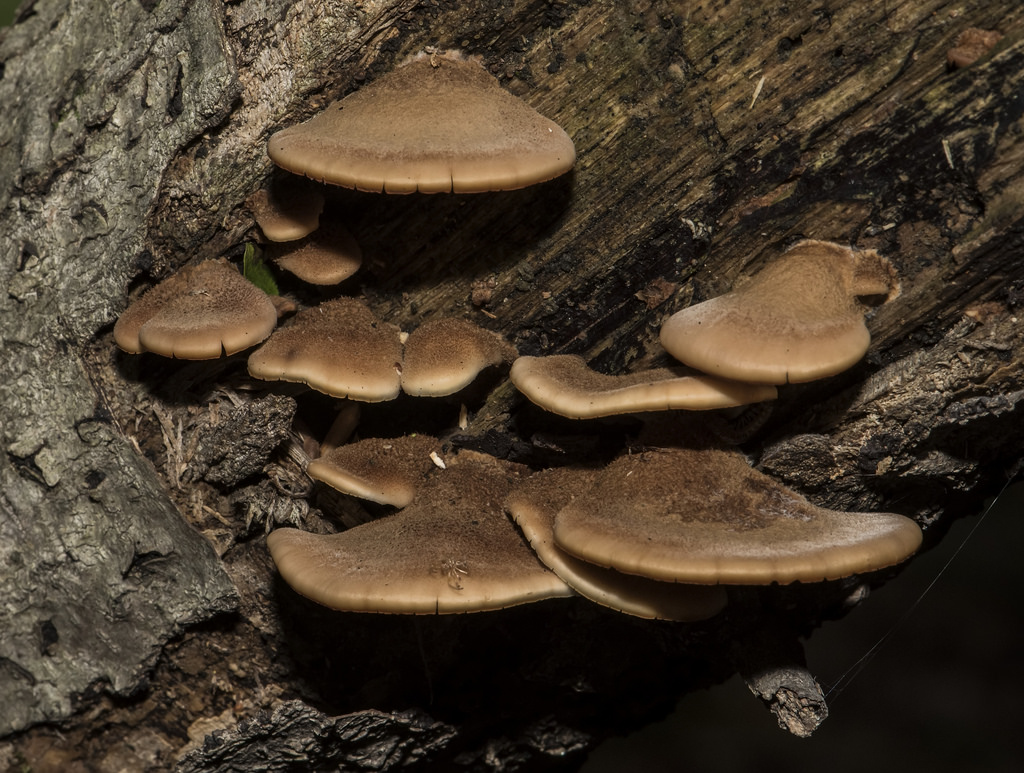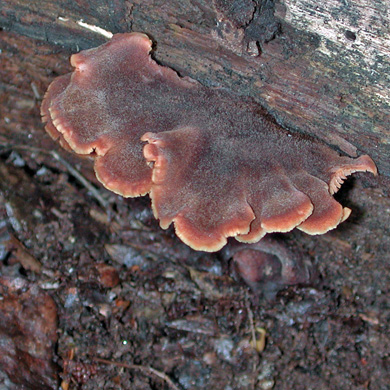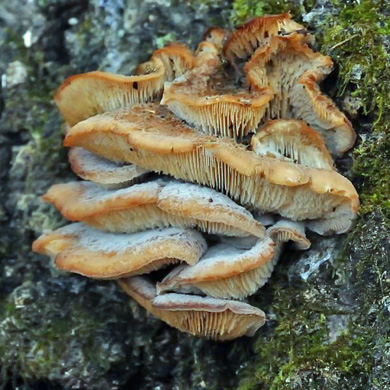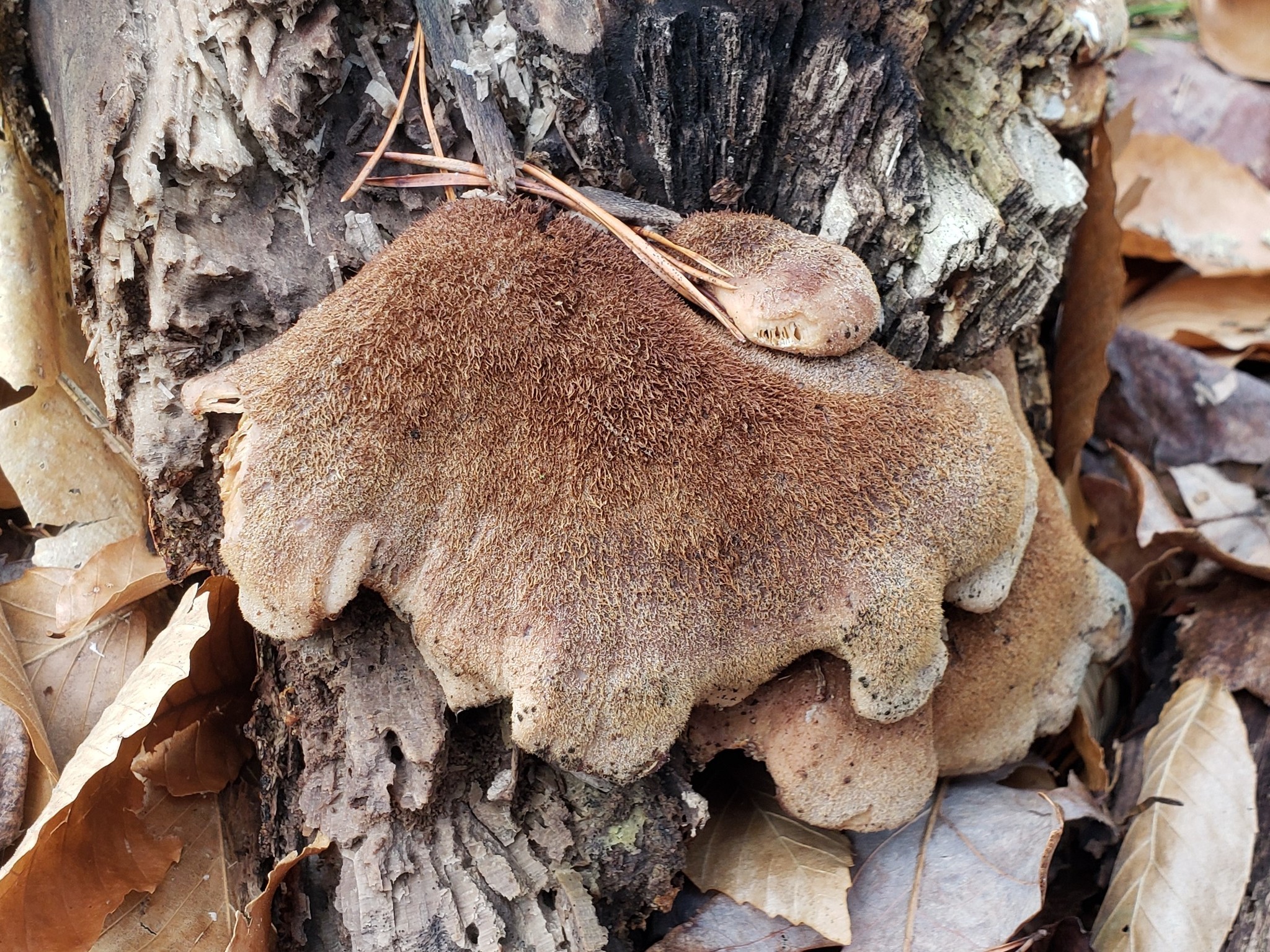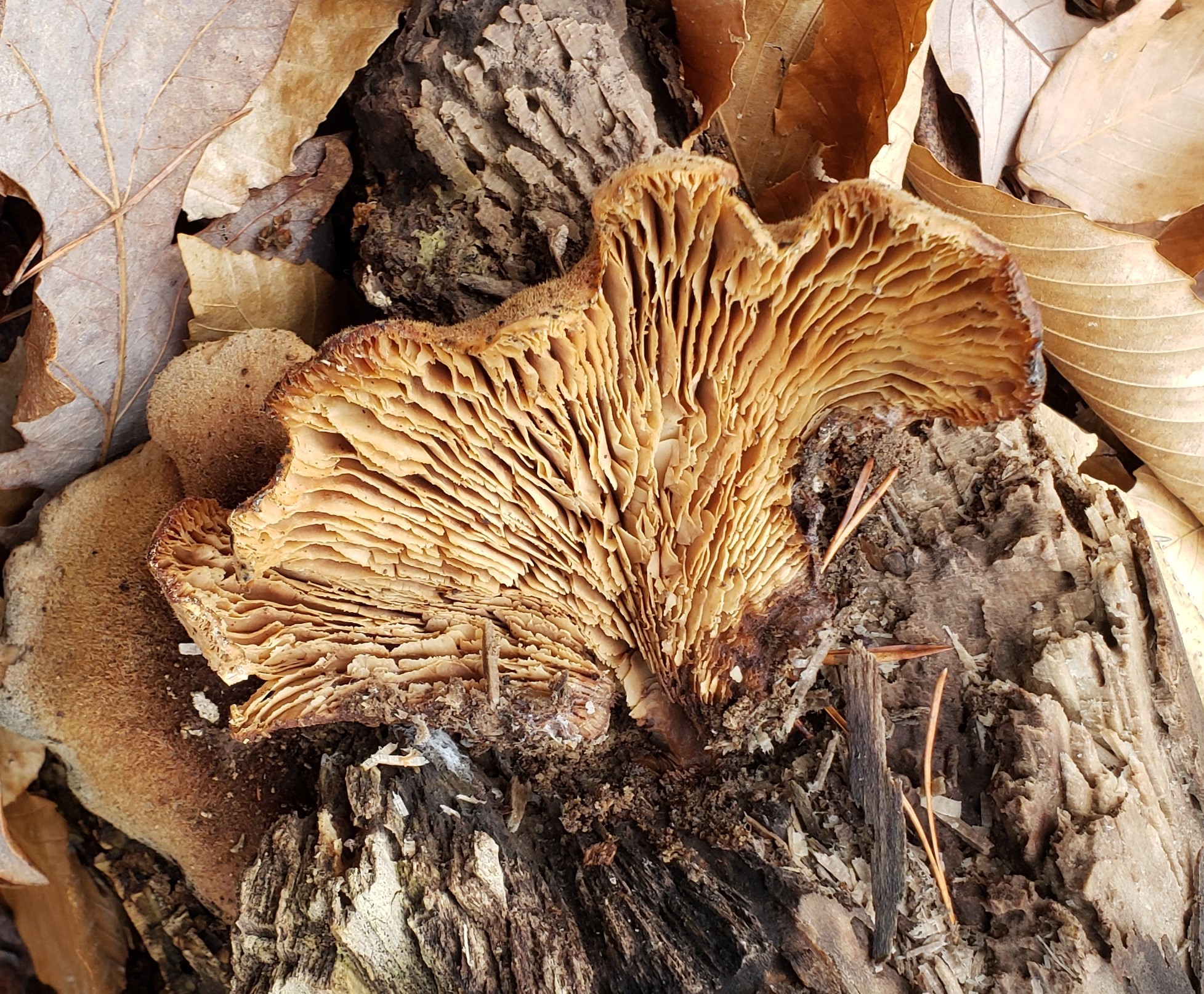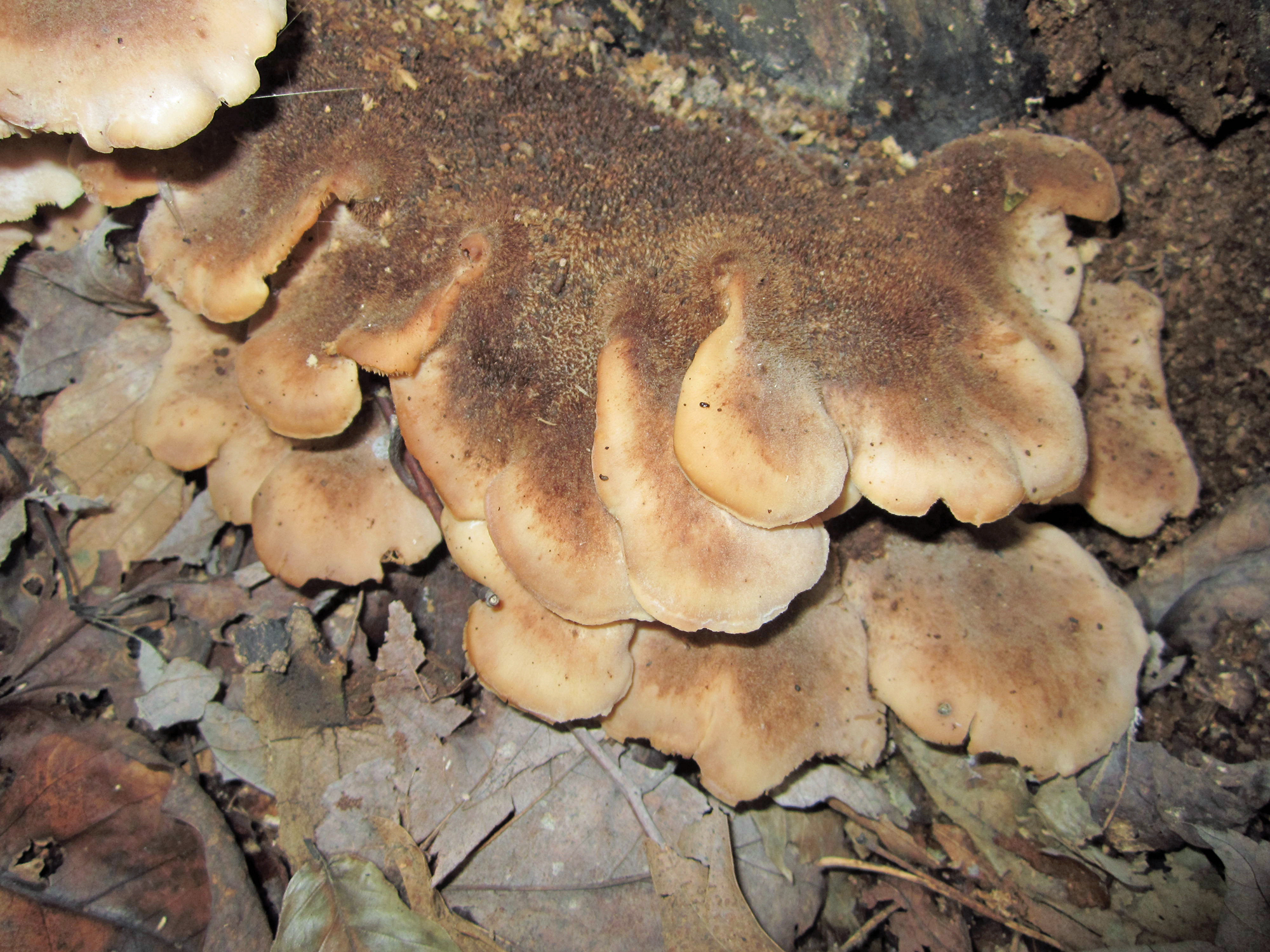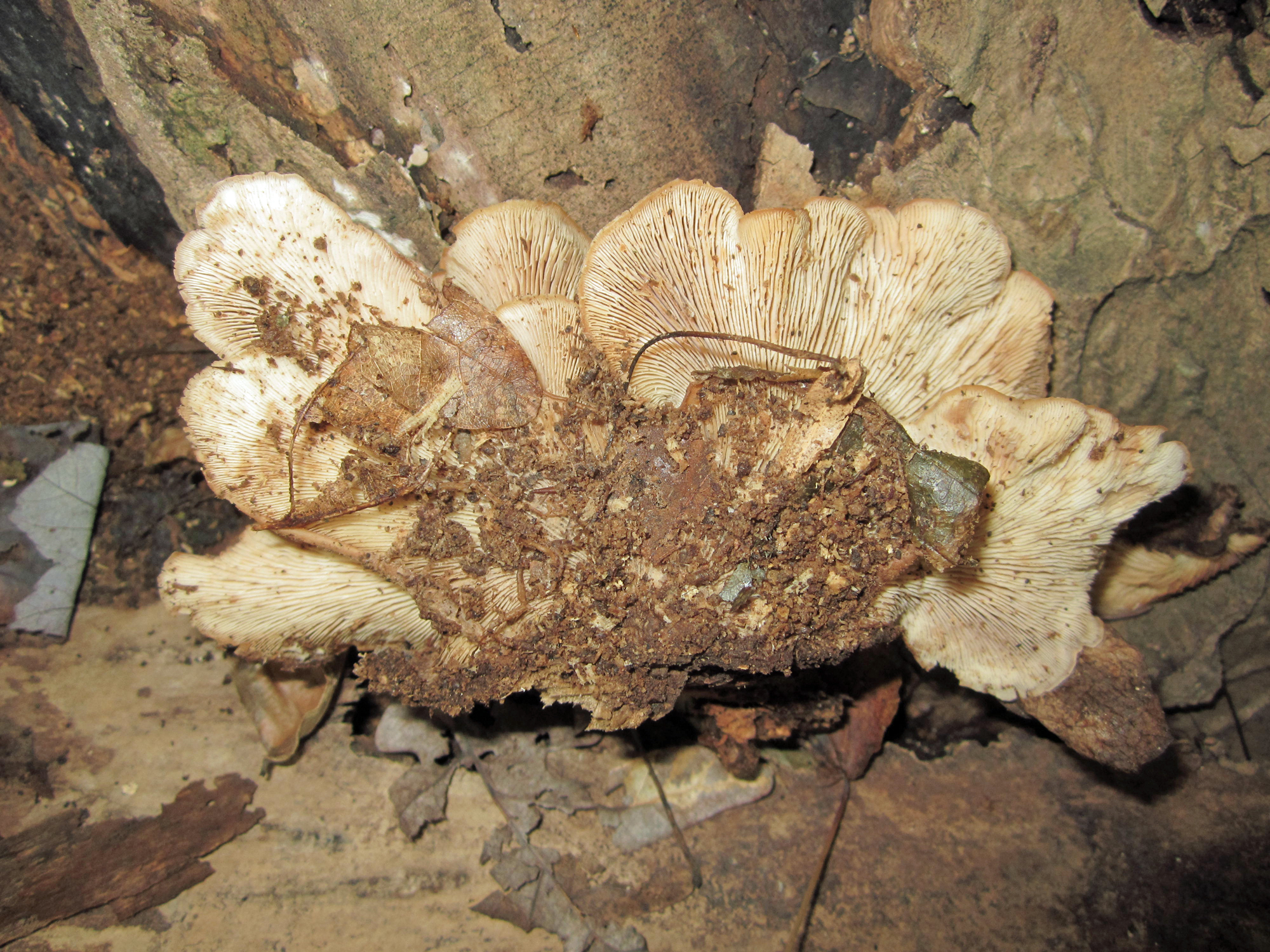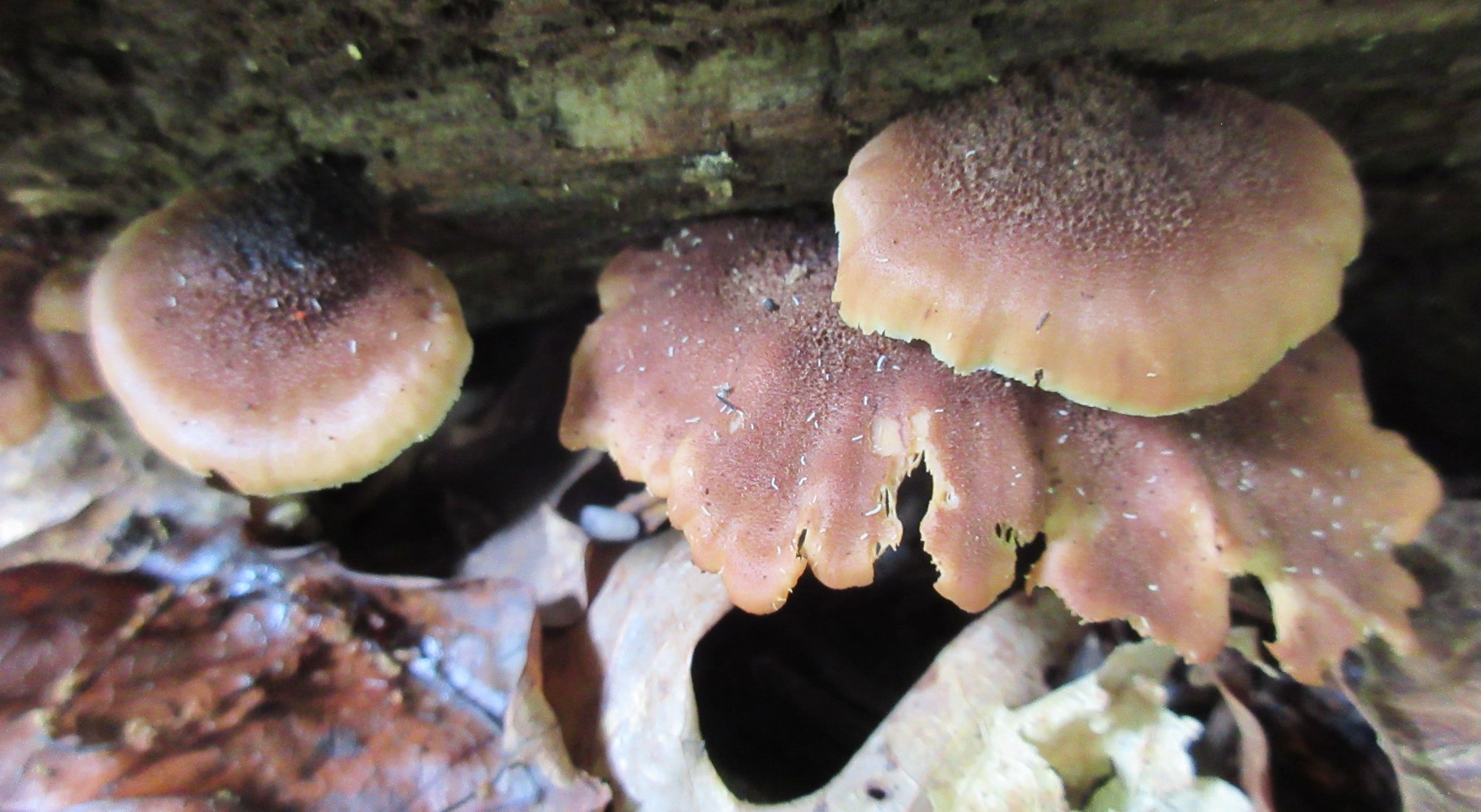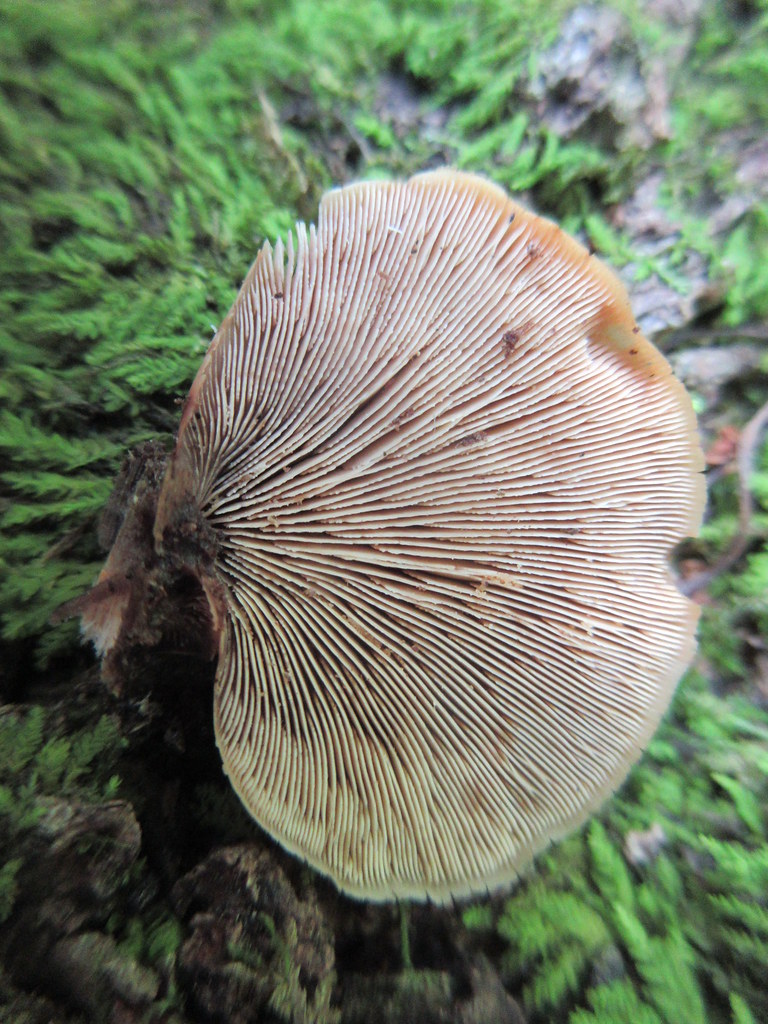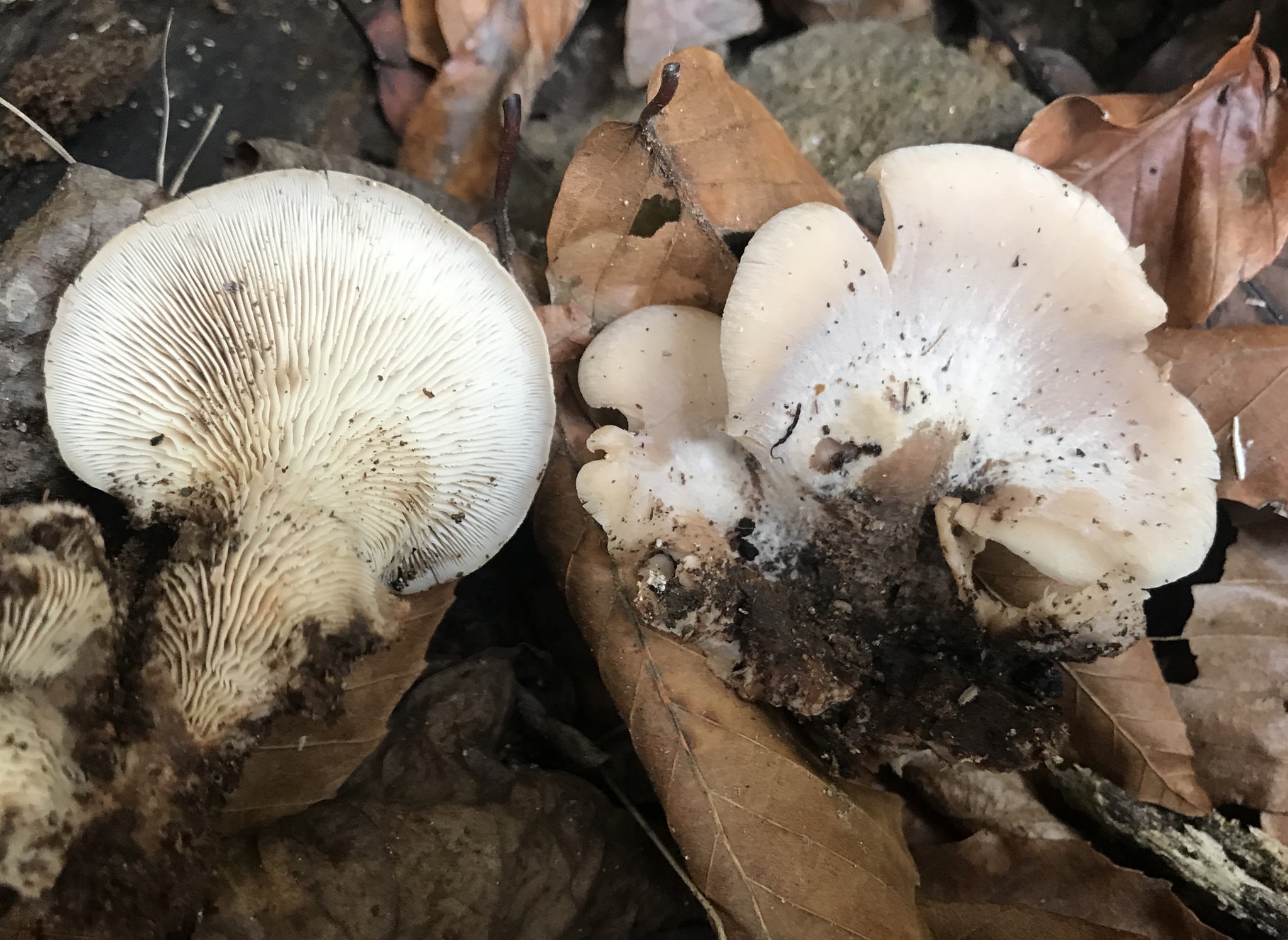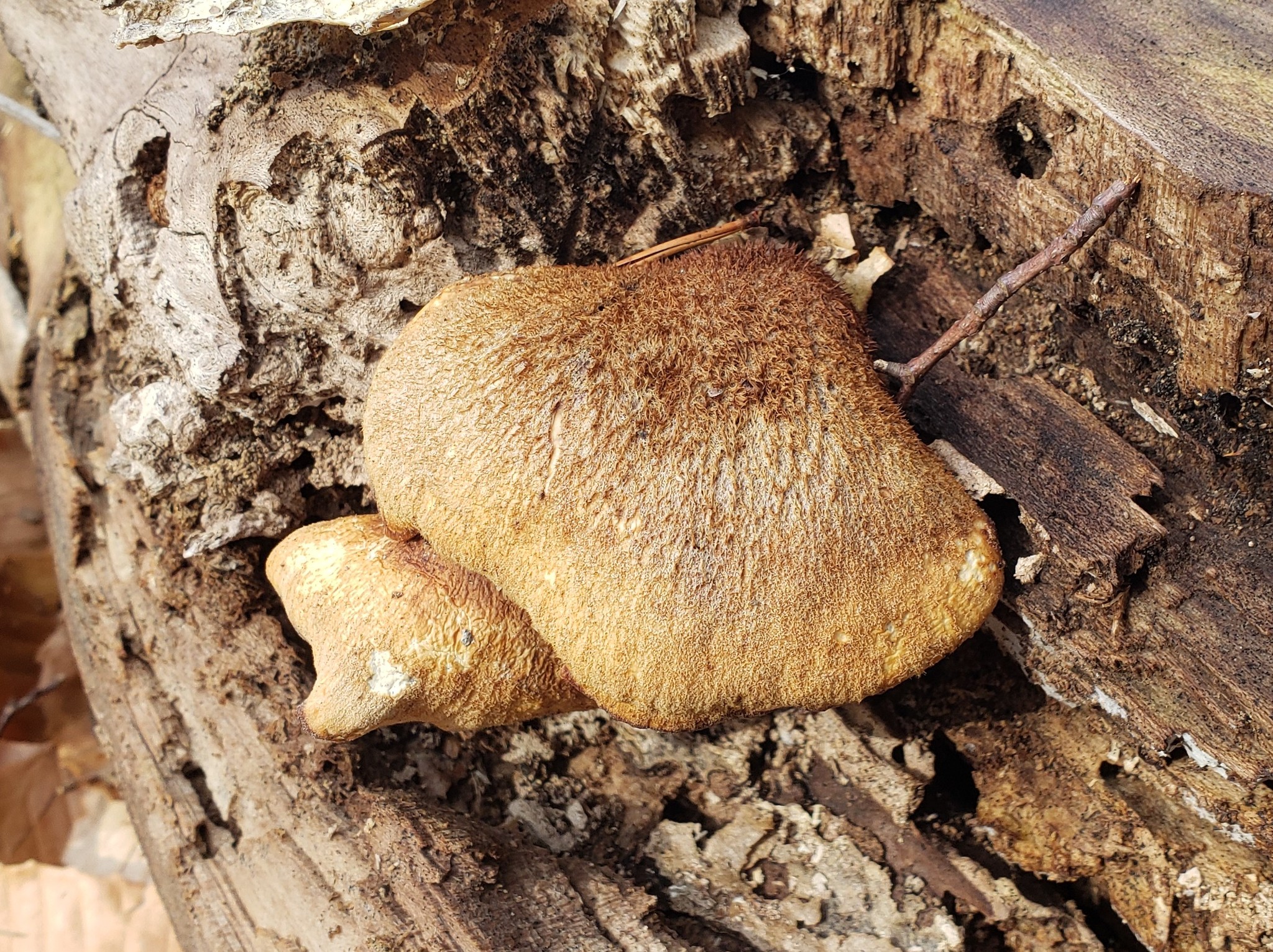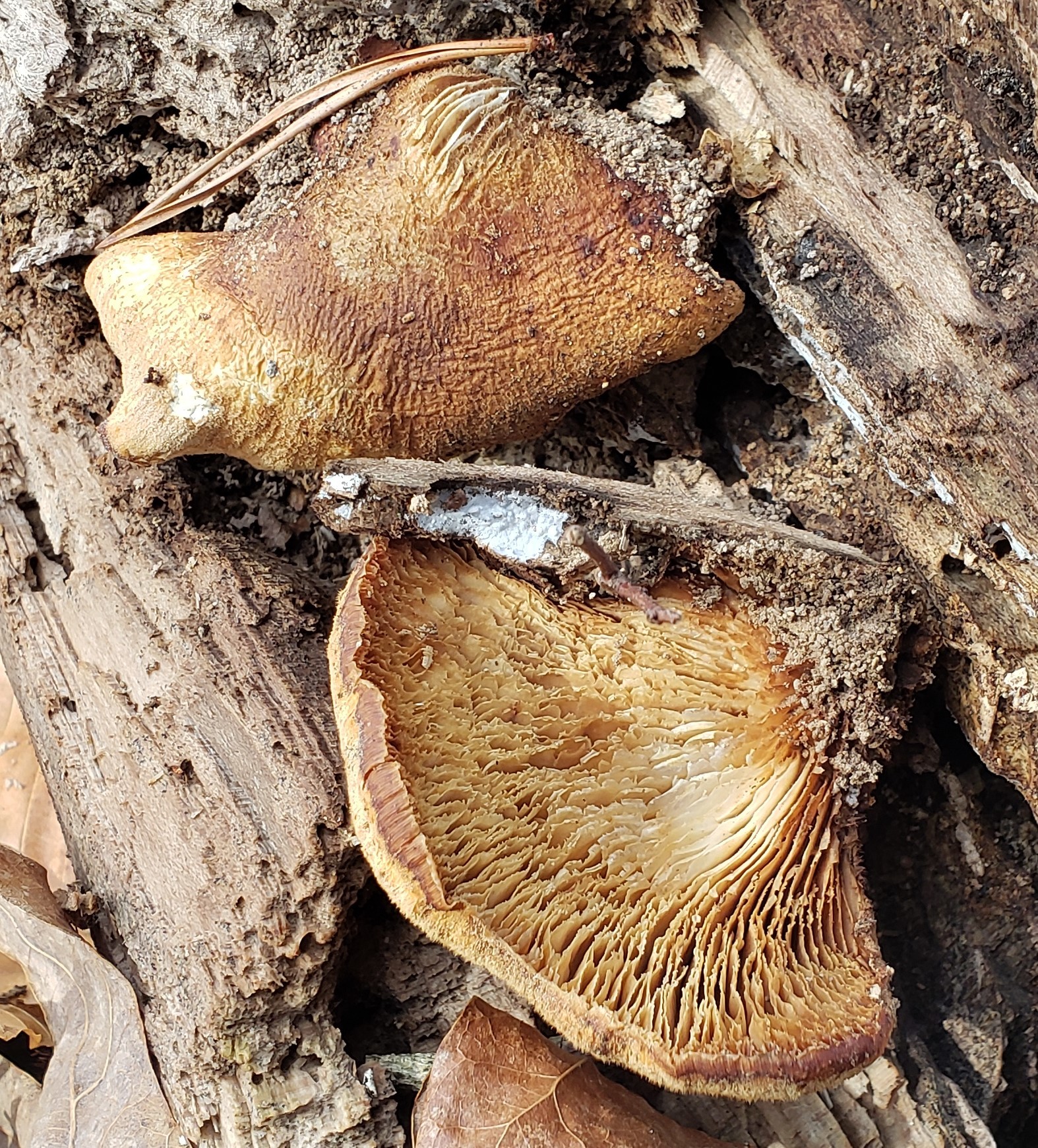Map Snapshot














78 Records
Status
Found in clusters on hardwood logs and branches, especially oak and beech.
Description
Fruiting body: Disc darker brown, margin paler; velvety with fibrils, cuticle tough, semicircular to circular, convex to nearly flat, margin inrolled with appressed light hairs, veil remnants; flesh white to pale brown; definite odor when cut. Gills: Pinky-brown to yellow-tan, serrated, close; radiate from point of attachment. Stalk: None (J. Solem, pers. comm.).
Seasonality Snapshot
Source: Wikipedia
| Lentinellus ursinus | |
|---|---|

| |
| Scientific classification | |
| Domain: | Eukaryota |
| Kingdom: | Fungi |
| Division: | Basidiomycota |
| Class: | Agaricomycetes |
| Order: | Russulales |
| Family: | Auriscalpiaceae |
| Genus: | Lentinellus |
| Species: | L. ursinus
|
| Binomial name | |
| Lentinellus ursinus | |
| Synonyms[1] | |
|
Agaricus ursinus Fr., 1821 | |
Lentinellus ursinus is a species of fungus belonging to the family Auriscalpiaceae.[1]
The caps are 2–7 centimetres (1–3 in) wide, often separated into lobes. They are brown in the center, fading to white at the margin. The spore print is white.[2]
It may require microscopy to distinguish from L. angustifolius. Lookalikes from other genera include Pleurotus ostreatus.[2]
It can be found in North America from October–March on the West Coast and July–October elsewhere.[2]
Like all species in its genus, it is inedible due to its bitterness.[3]
References
[edit]| Lentinellus ursinus | |
|---|---|
| Gills on hymenium | |
| Cap is convex | |
| Hymenium is decurrent | |
| Stipe is bare or lacks a stipe | |
| Spore print is white | |
| Ecology is saprotrophic | |
| Edibility is inedible | |
- ^ a b "Lentinellus ursinus". www.mycobank.org. Retrieved 11 February 2021.
- ^ a b c Audubon (2023). Mushrooms of North America. Knopf. p. 156. ISBN 978-0-593-31998-7.
- ^ Miller Jr., Orson K.; Miller, Hope H. (2006). North American Mushrooms: A Field Guide to Edible and Inedible Fungi. Guilford, CN: FalconGuide. p. 145. ISBN 978-0-7627-3109-1.
